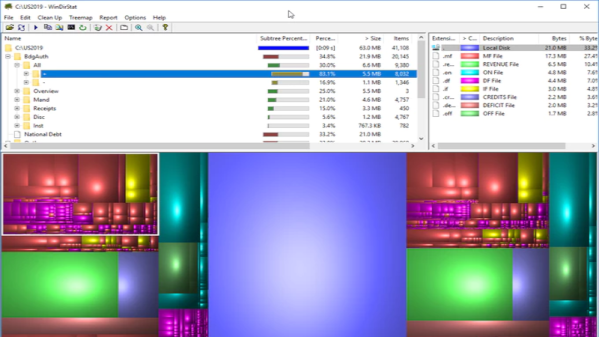Understanding a national budget can be difficult, with political interests and distorted talking points obscuring the truth. There’s no substitute for diving into the hard data yourself, but it can be difficult to know where to start. [D. Scott Williamson] wanted to do just that, and took an unconventional path – using file system tools to analyse the 2019 US budget.
The basic idea is simple. A file is created for every line item on the budget, and this file is filled with a $ for every million dollars that item costs. These files are sorted into folders for the relevant bureaus and agencies responsible, creating a Fiscal File System representation of the entire budget. The file system can then be analysed with standard tools to get a look at the overall make up of the budget – in this case, WinDirStat does a particularly good job.
It’s a novel way to go about budget analysis, and fills a gap in the market now that Time Plots aren’t producing their Death and Taxes infographics anymore. Pre-cooked file systems covering budgets back to 1977 are available for your perusal, should you need to investigate how things have changed over time.
Unsurprisingly, we haven’t covered the national budget before, but we’re always down to talk file systems.











